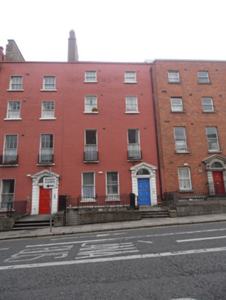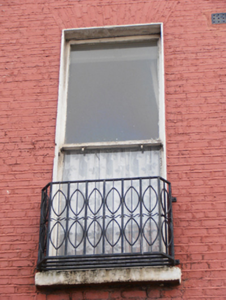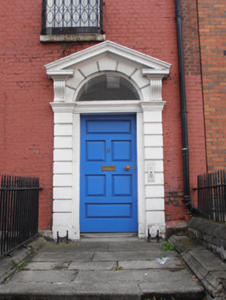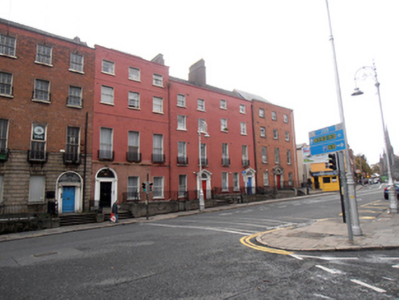Survey Data
Reg No
50010651
Rating
Regional
Categories of Special Interest
Architectural, Artistic
Original Use
House
In Use As
Apartment/flat (converted)
Date
1750 - 1770
Coordinates
315520, 235085
Date Recorded
25/09/2011
Date Updated
--/--/--
Description
Terraced four-storey house over exposed basement, built c.1760, with three-bay ground floor and two-bay upper floors. Now in multiple occupancy. Pitched slate roof concealed behind parapet wall having painted granite coping. Tall shared shouldered rendered chimneystack to south party wall with clay pots. Shared cast-iron hopper and downpipe breaking through parapet to north. Painted red brick walling laid in Flemish bond on painted granite plinth course above rendered basement wall. Gauged brick flat-arched window openings with patent rendered reveals, painted stone sills and replacement timber sliding sash windows. Replacement steel balconettes at first floor level. Round-headed door opening within pedimented painted stone doorcase, having replacement timber door flanked by rusticated pilasters to stepped lintel cornice, plain fanlight with rusticated surround and open-bed pediment supported on scrolled console brackets. Door opens onto granite platform with two cast-iron bootscrapers and four granite steps. Platform and basement area enclosed by original wrought-iron railing on moulded granite plinth wall with matching iron gate giving access to basement.
Appraisal
This substantial building has the proportions and facade detailing typical of Georgian townhouses. Parnell Square (formerly) Rutland Square, was one of the earliest residential squares laid out in Dublin and the status of the original residents is reflected in the impressive dimensions of this house. Its generous fenestration suggest opulence, and the different arrangement of openings to the ground floor adds visual interest. The retention of timber sash windows enhances the character of the house, and the presence of decorative balconettes and the fine doorcase provides decorative interest. The building is integral to the terrace and to the setting of an important part of the Georgian townscape.







